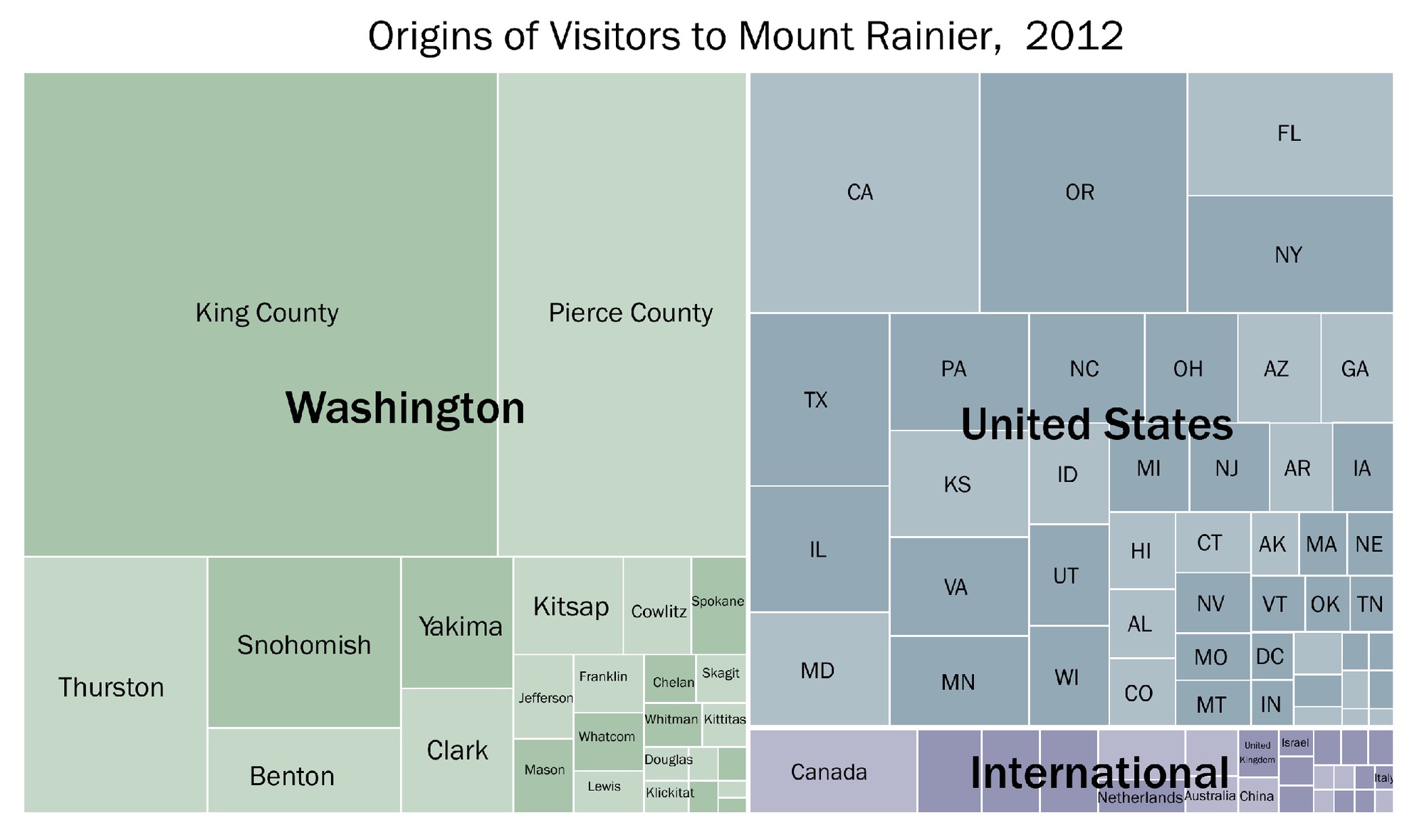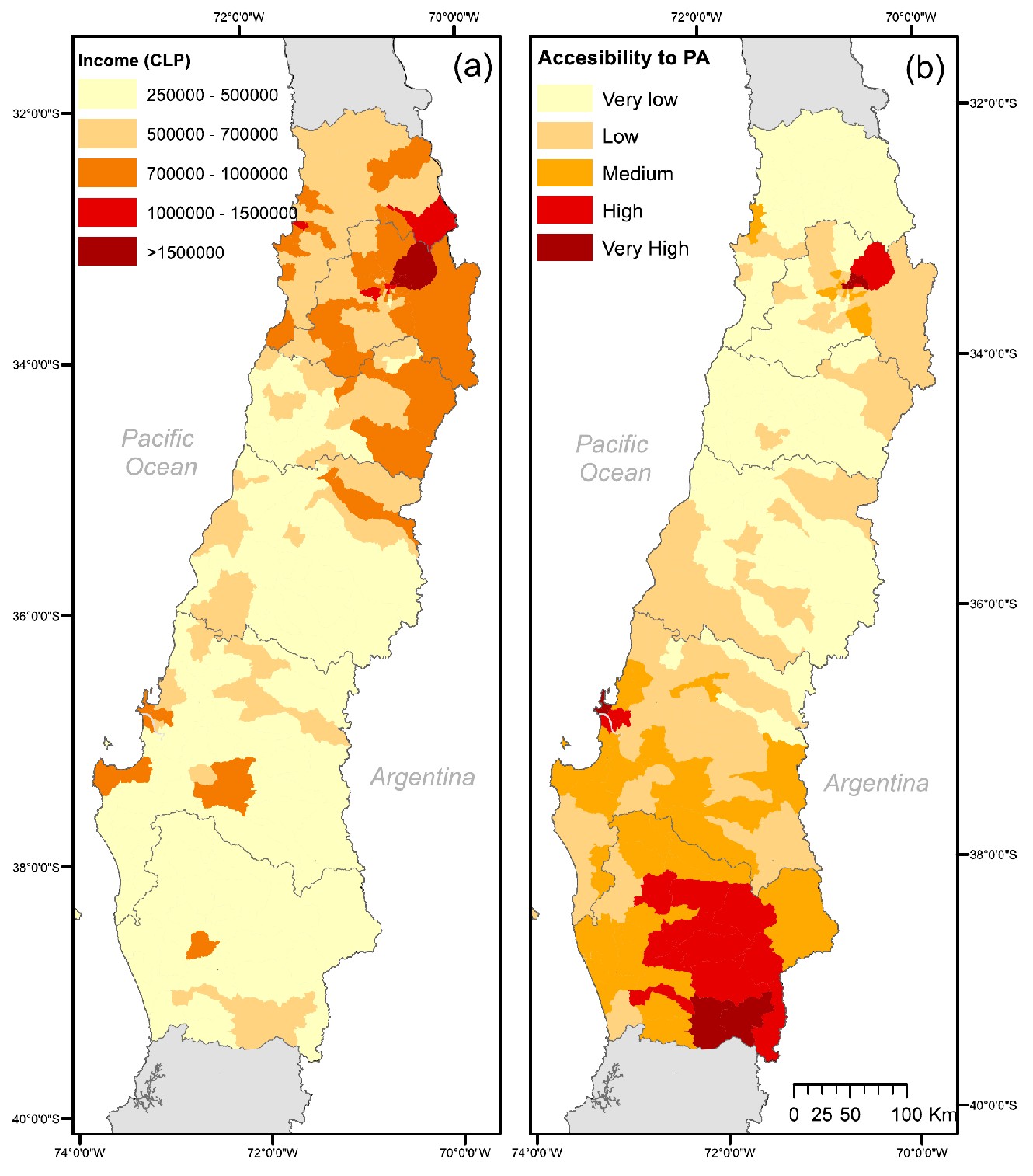Learning who is (and isn't) recreating
Parks, green spaces, and other public lands provide people with a broad range of physical, social, and economic benefits. However, not everyone has access to these natural places. This is, in part, because decision-makers cannot effectively evaluate management options or advocate for open spaces without better information on the amount and character of recreational use.

The Outdoor R&D team is developing approaches for collecting richer information on who uses public lands and their home locations by inspecting publicly shared content. Ongoing research by our team indicates that the home locations of visitors can be inferred by looking at users’ public profiles and the locations of all other content that the user has shared publicly on social media platforms. In this way, the locations of photographs that are shared online can be a reliable source of data on the home locations of visitors across thousands of destinations. Generally, this is because people who post content during their visit to an open space either self-report their home location in their online profile or because the majority of their other posted photographs or tweets are from locations near their home. Whether visitors’ home locations or their volunteered information also provide information on their socio-economic status is an open question. With collaborator Afra Mashhadi we are exploring methods that use convolutional neural networks to analyze publicly shared photographs to examine potential biases that exist in social media data and in the algorithms that are used for the purpose of detecting demographics of recreational visitors.

These approaches allow managers to evaluate how features of the built and natural environments enhance recreational opportunities and benefits, as well as which neighborhoods or communities would be most affected by improvements or losses associated with potential changes in management or accessibility. This research is supporting ongoing planning processes at several locations globally.